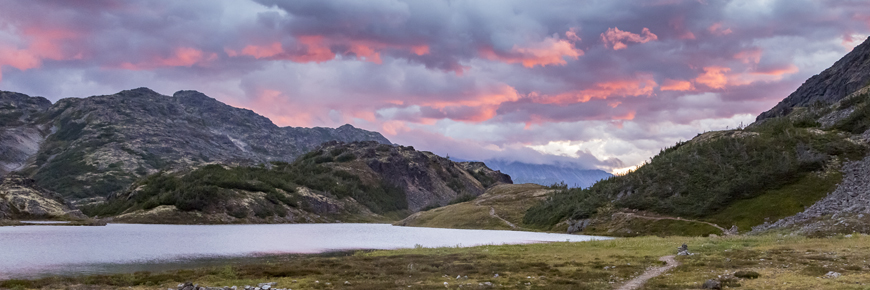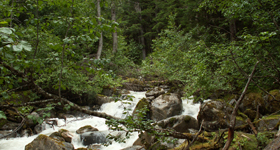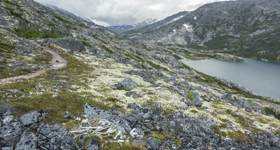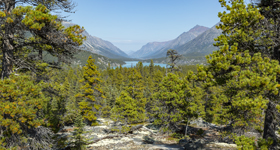
Ecosystems and habitat
Chilkoot Trail National Historic Site
Pacific northwest coastal forest

This forest extends from sea level to the 914 metre (3,000 foot) level in Alaska. Nearly all of the dense stands of alder, cottonwood, aspen, western hemlock and Sitka spruce are second-growth. Understory plants such as mosses, ferns, devils club and blueberries flourish in the mild marine climate. Black and grizzly bears are attracted to the Taiya River by the annual spawning runs of pink and chum salmon. Boreal toads, bald eagles, river otters and American dippers also live in this mild coastal habitat.
Alpine tundra

As you approach the 914 metre (3,000 foot) level near the summit of the Chilkoot Pass, the climate becomes sub-arctic and the vegetation changes dramatically. Large areas on the Canadian side of the trail are devoid of trees. Mosses, lichens, heaths, dwarf shrubs and low-growing willows survive on the thin alpine soil. You may see arctic ground squirrels, hoary marmots, pikas, the occasional mountain goat or ptarmigan in this harsh alpine environment.
Subalpine boreal forest

You will hike out of the alpine tundra into a subalpine boreal forest on the descent from Deep Lake into Lindeman City. This forest is drier than the coastal forest because of the "rain shadow" created by the Coastal Mountains. Its forests are less dense and consist mainly of subalpine fir, lodgepole pine, willow and alder. Moose, wolves, black and grizzly bears, porcupine, wolverine, ruffed grouse and white-throated sparrows can all be found here.
Related links
- Date modified :